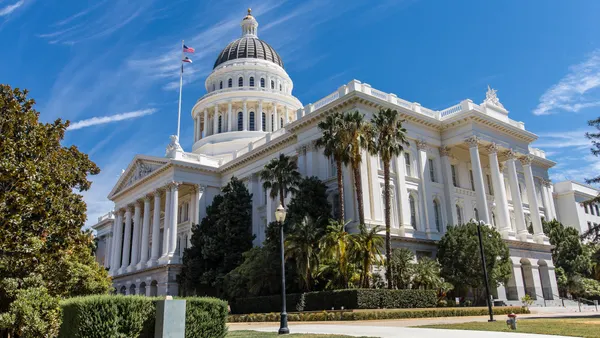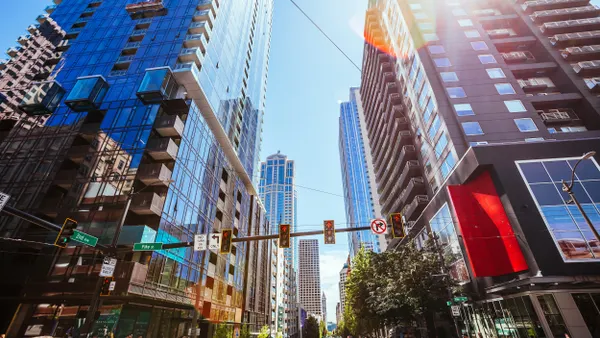Nature has emerged as a key partner for cities looking to advance environmental justice and prepare for and mitigate worsening climate change. From coast to coast, cities are working toward tree-planting goals, and the White House is all in, announcing in April $1 billion in grants for communities to increase equitable access to trees and green spaces.
While the funding presents a “tremendous opportunity,” achieving this goal is not as simple as planting as many trees as possible in underserved communities, said Lincoln Larson, an associate professor at North Carolina State University.
How communities can successfully develop and execute equitable tree-planting plans is the focus of Larson’s research, which is supported by the U.S. Forest Service.

Smart Cities Dive caught up with Larson to discuss the potential worst outcome of tree-planting efforts, whether trees are inherently valuable to society and why communities in most need of trees may not welcome more.
Editor’s note: This interview has been edited for length and clarity.
SMART CITIES DIVE: What opportunities and risks do communities face, with all the recent attention allocated to trees?
LINCOLN LARSON: While we're pretty good at identifying where trees need to be planted, actually working with communities to get that done in a way that resonates with community members and aligns with their goals, preferences, concerns, all of the above becomes a lot more challenging, especially when you realize that you can't just put a tree in the ground. You have to nurture it, you have to care for it and maintain it.
The worst outcome — which is what we see in a lot of cities with tree-planting programs that don't have resources and community buy-in to sustain themselves — [is] you end up with dead trees all over the city. That's a worse outcome than no trees for a lot of people.
And those dead trees are due to a lack of maintenance?
Yeah. Sometimes, when you're planting trees, especially in narrow right-of-ways or on private property, it's hard to maintain them, with watering and tree pests. We see that nationally, with a lot of invasive [insect] species coming in and threatening urban tree species. If you don't have a support team, with the technical expertise and the resources to support tree growth over the long term, you can run into challenges.
How can tree-planting programs avoid those unwanted outcomes?
A lot of tree-planting professionals and NGOs that focus on tree equity operate with the assumption that everybody views trees as this inherent good for society. But the reality is that many members of the public don't.
In a lot of communities, for a variety of reasons, trees are seen as a problem. They're a maintenance issue. They create opportunities for perceived crime in densely forested settings. Sometimes trees fuel property [value] rises and [higher] property taxes, which is a good thing, but it also can catalyze green gentrification, which drives residents out of neighborhoods where they might have been for generations.
Are there common pitfalls of tree-planting programs when it comes to developing an equitable urban forest?
The obvious one is don't plant trees without public input and community involvement. Yet we do it so often. I think that happens a lot, too, when we're desperately trying to get trees in the ground because the grant cycle ends in a year, or whatever the motivation may be. It's often easier to just plant on public property. In a lot of cases, that may work. In others, it may be that if you want to increase canopy coverage in underserved neighborhoods, you have to find a way to do it on private property because there may not be a lot of public green spaces that exist in these areas where it's ripe for the planting, if you will.
That dichotomy presents challenges, especially in a lot of these areas where you have predominantly renters with absentee landlords who may or may not allow this. Suddenly you have a strange dynamic again about who has access to trees. Do you have to be a homeowner to get trees?
What do you recommend?
The solution to a lot of these problems is understanding that there are local community organizations and nonprofits embedded in those spaces already who are really engaged in social justice, environmental justice issues, and know what the community needs and is looking for.
Work with these organizations [and] don't think that your same practice that worked elsewhere is going to work in this place. Take a little bit of time to get to know the place, the key players, and work within their system and the organizations that are based there to make things happen. Yes, it takes time, but that is time well spent, if your goal is a healthy urban forest.











